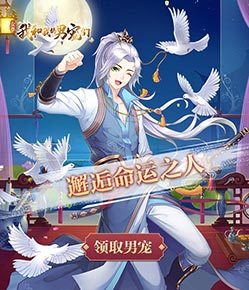精品推荐SSS--康熙款五彩梅瓶一对
这种梅瓶的造型在清代比较常见,流行在清代康熙时期,它跟我们传统审美上的梅瓶造型,肩部圆润往下渐收到足外撇的那种不太一样。这件这种梅瓶从肩部开始丰满,往下就直收下去到圈足变成直立。这种梅瓶在清代早期,特别是在康熙的早期还是比较多见的。有民窑的,但是也有下面写本朝款的大清康熙年制。到光绪的时候,这种造型也有仿制。造型可以千变万化,但是这种胎釉的质感包括画风,肯定是具有一个时代的时代性的。
This type of plum vase was quite common in the Qing Dynasty and was popular during the Kangxi period of the Qing Dynasty. It is different from the traditional aesthetic style of plum vases, where the shoulders are rounded and gradually slanted downwards to the outside of the feet. This plum vase starts from the shoulder and is full, then retracts straight down until the circular feet become upright. This type of plum vase was quite common in the early Qing Dynasty, especially during the early Kangxi period. There are folk kilns, but there are also Qing Dynasty Kangxi era kilns with the following inscriptions. By the time of Guangxu, this style had also been imitated. The design can vary greatly, but the texture of this type of glaze, including its painting style, is definitely of a certain era.
上图这种梅瓶,是传统审美当中梅瓶造型,肩部丰满,然后向下渐渐地收,足微微的有点外撇,给人一种端庄稳重的感觉。这种梅瓶造型是在我们审美观念当中,认为的典型的梅瓶。但是器形千变万化,每个器形在时代中有不同的变化。观音瓶也好、橄榄瓶也好,清代早期或者是到清代晚期,造型略微在细节上,都会有一点点变化
The plum vase in the picture above has a traditional aesthetic design of plump shoulders that gradually retract downwards, with slightly sloping feet, giving a sense of solemnity and stability. This type of plum bottle shape is considered a typical plum bottle in our aesthetic concept. But the shapes of the vessels are ever-changing, and each vessel undergoes different changes in the times. Whether it's a Guanyin bottle or an olive bottle, there will be slight changes in the design details in the early Qing Dynasty or late Qing Dynasty
从某种意义上说,清康熙时的五彩是真正意义上的 五彩瓷 。为什么这样说呢?因为明代五彩,如不使用釉下青花,实际上就是釉上红彩、绿彩、黄彩等;而康熙五彩的最大特点是运用了釉上蓝彩和 黑彩 ,形成了红、绿、黄、黑、赭、蓝等多种颜色的搭配和运用。由于有了深色调的蓝和黑,使得康熙五彩的色彩对比更加和谐、沉稳。康熙时蓝彩烧成后的色调,其深艳程度超过了青花,而黑彩又有黑漆般光泽。康熙五彩所用的颜色比明代大大增多,因此康熙五彩比明代单纯釉上五彩更显得娇艳动人。康熙五彩瓷光艳照人,很重要一点是在烧成上。釉上彩是在彩炉中低温烧成的,火候的把握十分重要,温度过高,有些釉上颜色会流动或损失,炉温太低则彩料的光泽不足。康熙五彩一般都色彩鲜艳,光泽明亮。这说明康熙时烧造彩瓷的工艺已十分成熟。 《饮流斋说瓷》记载:"清代彩瓷变化繁迹,几乎不可方物,康熙硬彩、雍正软彩。硬彩者,谓彩色甚浓,釉傅其上,微微凸起也。""硬彩、青花均以康熙为极轨。 康熙五彩,绘画工致精丽,生动传神,改变了明代嘉靖、万历时只重色彩而不讲究造型的粗率画风。其施彩较明代均匀,勾勒轮廓所用线条以焦墨为料,笔锋劲挺有力,后用油墨彩料,笔触圆润柔和。"康熙彩画手精妙,官窑人物以耕织图为最佳,其余龙凤、番莲之属,规矩准绳,必恭敬止,或反不如客货之奇诡者。盖客货所画多系怪兽老树,用笔敢于恣肆。"《陶雅》中对康熙民窑五彩瓷器的评价是客观的。康熙民窑五彩器的纹饰,由于不像官窑那样受束缚,题材丰富多样,除了花卉、梅鹊、古装仕女以外,还有戏曲人物等。在描绘各种形象时,勾画的线条简练有力,在乎涂各种彩色后,给人一种明朗感。当后人以雍正粉彩与其比较时,雍正粉彩显得细腻而柔软,康熙五彩则显得劲利而结实,因此被称为"硬彩",也被称为"古彩"。 《陶雅》中对康熙民窑五彩瓷器的评价是客观的。康熙民窑五彩器的纹饰,由于不像官窑那样受束缚,题材丰富多样,除了花卉、梅鹊、古装仕女以外,还有戏曲人物等。在描绘各种形象时,勾画的线条简练有力,在乎涂各种彩色后,给人一种明朗感。
In a sense, the colorful porcelain during the Kangxi reign of the Qing Dynasty is truly a colorful porcelain. Why do you say that? Because in the Ming Dynasty, the five colors, if not underglaze blue and white, were actually overglaze red, green, yellow, and so on; The biggest feature of the Kangxi Five Colors is the use of overglaze blue and black colors, forming a combination and application of various colors such as red, green, yellow, black, ochre, and blue. Due to the presence of deep tones of blue and black, the color contrast of the Kangxi Five Colors became more harmonious and stable. During the Kangxi reign, the color tone of blue color after firing exceeded that of blue and white, while black color had a black lacquer like luster. The colors used in the Kangxi Five Colours were greatly increased compared to the Ming Dynasty, so the Kangxi Five Colours were more charming and charming than the simple glazed Five Colours of the Ming Dynasty. Kangxi's colorful porcelain shines brightly, and one of the most important aspects is its firing. Overglaze colors are fired at low temperatures in a color furnace, and the control of temperature is very important. If the temperature is too high, some overglaze colors will flow or lose. If the furnace temperature is too low, the luster of the color material will be insufficient. The Kangxi Five Colors are generally brightly colored and have a bright luster. This indicates that the process of firing colored porcelain during the Kangxi period was very mature. The "Yin Liu Zhai Shuo Porcelain" records: "During the Qing Dynasty, there were numerous changes in colored porcelain, and it was almost impossible to find anything. During the Kangxi period, there were hard colors and soft colors in the Yongzheng period. Those with hard colors were called very rich in color, and the glaze on them was slightly raised Both hard color and blue and white are based on the Kangxi period. Kangxi's five color paintings are exquisite and vivid, changing the rough style of painting during the Jiajing and Wanli periods of the Ming Dynasty, which only focused on color and did not pay attention to shape. Their color application is more uniform than that of the Ming Dynasty, and the lines used to outline are made of burnt ink, with a strong and powerful stroke. Later, ink and color materials are used, and the strokes are round and soft. Kangxi's colorful painters are exquisite, and the figure of the official kiln is best in the cultivation and weaving picture, while the other types of dragons, phoenixes, and lotus belong to, Rules and regulations must be respected, or they may not be as cunning as customers and goods. Many of the paintings by Gai Ke Huo are about monsters and old trees, and he dares to use his pen recklessly. Tao Ya The evaluation of the colorful porcelain from the Kangxi folk kilns in China is objective. The decorative patterns of the colorful vessels in the Kangxi folk kilns were not as constrained as those in the official kilns, and the themes were rich and diverse. In addition to flowers, magpies, and ancient ladies, there were also opera characters. When depicting various images, the lines drawn are concise and powerful, giving people a sense of clarity after applying various colors. When later generations compared Yongzheng powder color with it, Yongzheng powder color appeared delicate and soft, while Kangxi Five Colors appeared sharp and sturdy, hence it was called "hard color" or "ancient color".
康熙五彩由于色彩丰富,红彩比明代五彩用得少,因此,画面色彩沉稳、热烈而不浮躁是其鲜明特色。康熙五彩的成就是多方面的,从陶瓷艺术基本要素--造型与装饰方面分析,有几点十分突出。造型方面康熙五彩选择的瓷料精细,拉坯修坯端正细微,一丝不苟,坯体接口不留痕迹,这一点和明代不同;瓷胎是经过精心修坯的,但造型气势不失,仍留有古拙、凝重、质朴的感觉,这一点与清后期造型过于雕琢、轻薄之风亦不相同。康熙时无论官窑还是民窑,瓷器造型都很规矩严谨、古朴端庄,这和原料制备、制坯成型等工艺技巧的纯熟密不可分。
Due to its rich colors, the Kangxi Five Colours were used less in red than the Ming Dynasty Five Colours. Therefore, the stable, enthusiastic, and not impetuous colors in the paintings were its distinct characteristics. The achievements of the Kangxi Five Colors are multifaceted, and from the perspective of the basic elements of ceramic art - shape and decoration, several points are very prominent. In terms of shape, Kangxi Wucai chose exquisite porcelain materials, with precise and meticulous drawing and trimming, and no traces left at the interface of the body, which is different from the Ming Dynasty; The porcelain body has been meticulously crafted, but its shape still retains a sense of antiquity, solemnity, and simplicity, which is different from the overly carved and light style of the late Qing Dynasty. During the Kangxi reign, both official and civilian kilns had a well-defined and dignified porcelain design, which was closely related to the proficiency in raw material preparation, preform forming, and other techniques.








 +61
+61 +86
+86 +886
+886 +852
+852 +853
+853 +64
+64


